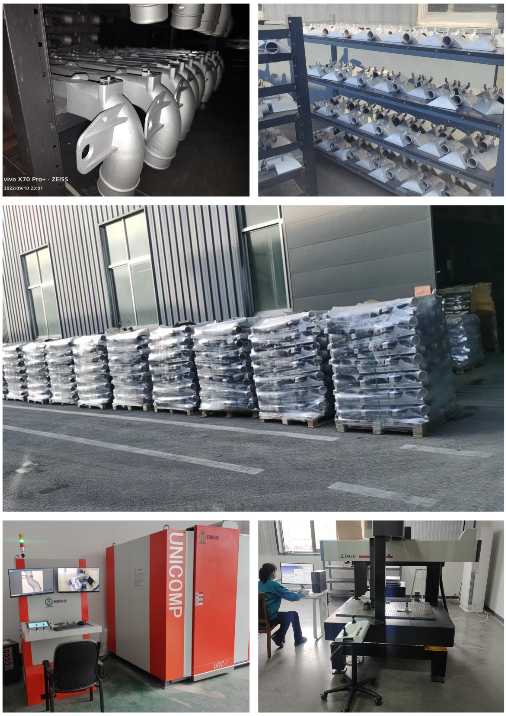Introduction
When selecting materials for critical components like valve bodies, industries such as automotive, oil & gas, and manufacturing require materials that offer a combination of strength, durability, corrosion resistance, and weight efficiency. Traditionally, valve bodies have been made from materials like steel or cast iron, but increasingly, aluminium alloys are being considered for valve body production. In this article, we will explore whether aluminium can be used for valve bodies, the advantages and challenges of using aluminium, and how this choice can impact performance, cost, and manufacturing efficiency.
What Are Valve Bodies and Why Material Choice Matters?
A valve body is the outer casing of a valve that houses the internal components such as the valve stem, disc, and seats. It is essential for ensuring that the valve functions properly, withstanding pressure and fluid flow while maintaining the integrity of the internal components. The choice of material for the valve body affects the valve’s performance, longevity, and maintenance requirements.
Key properties that must be considered when choosing the right material for valve bodies include:
- Strength: The material must be able to withstand the internal pressure and mechanical stress.
- Corrosion Resistance: Valve bodies are often exposed to harsh environments, so corrosion resistance is crucial, especially in industries like oil & gas, where exposure to chemicals and moisture is common.
- Weight: In applications where weight reduction is important (such as automotive or aerospace), lightweight materials like aluminium offer significant advantages.
- Cost-Effectiveness: Manufacturers are often tasked with balancing performance with production costs. Aluminium, while offering some advantages, can be more cost-effective than more traditional materials, depending on the application.
Advantages of Using Aluminium for Valve Bodies
Aluminium alloys are increasingly being considered for valve bodies due to their unique combination of properties. Here are the primary advantages of using aluminium in valve body production:
1. Lightweight and Strong
Aluminium is known for its lightweight nature compared to traditional valve body materials like steel or cast iron. This makes it a valuable choice for applications where weight reduction is essential, such as in automotive or aerospace industries. Despite its lower density, modern aluminium alloys, particularly those from the 6000 series, offer excellent strength-to-weight ratios, ensuring that the valve body remains structurally robust under pressure.
2. Excellent Corrosion Resistance
One of the main challenges valve bodies face, especially in chemical and marine environments, is corrosion. Aluminium has inherent corrosion resistance properties due to the formation of an oxide layer on its surface. This makes it highly suitable for applications where the valve will be exposed to harsh environmental conditions, such as seawater, chemicals, or high-moisture environments.
3. Good Thermal Conductivity
Aluminium is a good conductor of heat, which makes it a favorable material for valves used in systems where heat dissipation is critical. The enhanced thermal conductivity helps in regulating temperature and preventing heat buildup, which can improve the overall efficiency of the system.
4. Cost-Effectiveness
While aluminium can be more expensive than materials like steel or cast iron, it can still be a more cost-effective solution in the long term due to reduced transportation and installation costs (thanks to its lighter weight) and longer service life due to its resistance to corrosion. Additionally, the ability to use casting processes like gravity die casting and low-pressure die casting to produce aluminium valve bodies helps reduce manufacturing costs by improving production efficiency and precision.
5. Versatility in Design
Aluminium’s excellent formability and machinability make it easier to produce intricate and complex shapes in valve bodies. This can be especially useful for valves with detailed internal features or where precise tolerances are required. Cast aluminium alloys can be easily molded into customized designs, reducing the need for additional machining and improving the precision of the final product.
Challenges of Using Aluminium for Valve Bodies
While aluminium offers numerous advantages, there are certain challenges to consider when using it for valve body manufacturing:
1. Lower Strength Compared to Steel
Aluminium alloys, while strong, generally have a lower tensile strength than steel or cast iron. For high-pressure applications, such as some industrial systems, this may be a limiting factor. To overcome this, manufacturers often use stronger aluminium alloys (like 7075 or 2024) or reinforce the design with thicker sections or additional supports.
2. Potential for Galling in High-Pressure Applications
In certain high-pressure environments, aluminium may experience galling (seizing or sticking between metal surfaces) due to its softer nature compared to steel. However, this can be mitigated through proper lubrication, surface treatments (such as anodizing), or by combining aluminium with harder materials in critical areas.
3. Limited Use in Extremely High-Temperature Applications
Aluminium has a lower melting point compared to steel, which can limit its use in extreme high-temperature applications. While it performs well in moderate-temperature environments, for valves exposed to sustained high heat (e.g., in steam systems), materials like steel may still be preferred due to their higher temperature tolerance.
Applications of Aluminium Valve Bodies
While aluminium valve bodies are not suitable for all applications, they are gaining popularity in several industries where their properties offer specific advantages. Some key applications include:
- Automotive: Aluminium valve bodies are used in car engines, fuel systems, and cooling systems, where weight reduction is critical and moderate pressure resistance is required.
- Aerospace: Lightweight aluminium alloys are ideal for aerospace applications, where both weight and corrosion resistance are critical factors.
- Marine: Aluminium’s natural resistance to corrosion makes it a popular choice for valves used in marine applications, where exposure to seawater is common.
- Oil & Gas: In less extreme environments, aluminium is used for valve bodies in oil and gas pipelines, particularly for non-critical components.
Conclusion
Yes, valve bodies can be made from aluminium—and in many cases, they offer a number of advantages over traditional materials like steel or cast iron. Aluminium provides excellent corrosion resistance, reduced weight, and good thermal conductivity, making it a valuable choice for a variety of industries, including automotive, aerospace, marine, and more. However, the decision to use aluminium should be based on the specific requirements of the application, such as pressure, temperature, and mechanical stresses.
At Xindong aluminum casting manufacturer, we specialize in providing aluminium valve body solutions that meet your needs for performance, cost-efficiency, and reliability. Contact us today to discuss how we can help with your casting projects.
Contact Us for Aluminium Valve Body Solutions
Interested in learning more about aluminium valve body options? We provide high-quality casting solutions tailored to your needs.
Visit Our Website or Email Us for more information.

